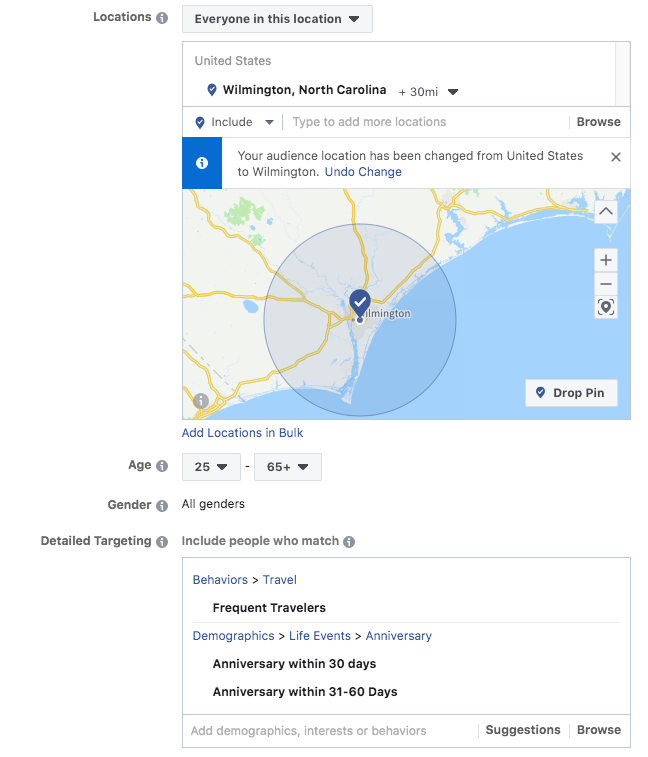How can Hotels Promote Sales During the Off-Season?
by Jeremy Razook
Increasing occupancy during the off-season remains one of the hotelier’s biggest challenges and can require a lot of creativity for your digital marketing strategy. Hotel marketers should utilize every platform, including email, social, paid search, and website content, to promote sales during the off-season. As challenging as it may sound, there are several tactics that you can implement to bolster your off-season marketing strategy.
Before beginning, key indicators for your new strategy include identifying your hotel’s seasonal downturn and getting your sales strategies in front of the right people. Knowing when to start planning and who you should be targeting is important for a successful strategy.
Follow the ideas below on how hotels can start promoting sales during the off-season:
How can hotels use website content to increase off-season occupancy?

1. Use off-season imagery on your website.
As the seasons shift, think about how you can convey your property as an off-season friendly destination. One idea is to swap out images of peak season activities with amenities that are specific to your shoulder or low-season. Doing so communicates that your property is worth visiting more than just a few months out of the year.
Important Note: Make sure your Google My Business listing and other local listings are updated with images of current amenities, too.
2. Create content dedicated to the off-season.
Use this space to highlight your hotel’s year-round amenities and services. Market to people searching for these services by doing your diligence with keyword research.
You should also use this tactic to build content that promotes local attractions and things to do in your area that are popular during the low-season. This could include indoor attractions, rainy day activities and more.
Link up with local groups and organizations to find the latest events happening in your area. Use this information to create a page or blog article dedicated to off-season events that you can promote and send prospective guests to on your website.
3. Build content around weddings, meetings, and sporting events.
Is your area a popular destination for sports tournaments? Are there local organizations that run expos, meetings, and events during your low season? Take a peek at search volume for these types of queries for your destination. Incorporate your research into a paid search campaign and offer discounted rates for groups.
If your property already offers wedding services, push discounted rates for wedding parties staying at your hotel or discounted wedding services for off-season weddings.
How can hotels use paid search to increase off-season occupancy?

4. Update your ad copy with off-season friendly verbiage.
If you’re running Google Ads and/or Microsoft Ads campaigns, update your campaign’s ad copy to reflect the changing seasons. Include amenities and services that are shoulder-season friendly and use season-specific verbiage. If you have a special offer for the slow season use the Google Ads promotion extension to compliment your seasonal ads.
5. Create campaigns that market off-season amenities.
Another option is taking advantage of non-brand amenity-based search queries. Research non-brand campaign opportunities that target a specific amenity like ‘hotel with indoor pool’ or ‘hotel with spa’. Utilize Google Trends to identify when people are more likely to search these queries so you get a better idea of when you should push those campaigns.
You can then pair these campaigns with your website content. If you created an article highlighting your off-season amenities, use the article as a landing page for your ads or create a sitelink for the article in both Google and Microsoft Ads.
6. Build out season-specific campaigns for your location.
Get ahead of the curve and be the first stop for people that are researching your destination during a specific time of year. As an example, if you’re located in Wilmington, NC, target the query “wilmington in december” in a paid search campaign to reach those top-of-funnel searchers.
This not only pushes you to the forefront for that particular query but you’ll also get the chance to make a first impression on guests that may be looking to visit the area. This strategy can also be used in tandem with a piece of content on your website that highlights your hotel’s location during the off-season.
How can hotels use email marketing to increase off-season occupancy?

7. Remarket to your email database
Email marketing for hotels can be a very cost-effective approach to digital marketing. Don’t neglect folks that are already familiar with your property. Tailor an email campaign that invites your past guests to visit during the off-season with discounted rates or a loyalty package.
Further, you can segment your email database down to guests that have stayed at your hotel during the off-season. Ask them to come back! Investigate whether there was a particular reason they stayed at your hotel during this time period. Be sure your findings are reflected when promoting sales during the off-season.
How can hotels use social media to increase off-season occupancy?
8. Tailor your targeting to locals.
Facebook Ads has quickly become a popular source for hotels looking to engage with their past, current, and prospective guests. In this instance, consider marketing to folks who are already nearby.
Push exclusive “locals-only” specials or promo codes that locals can use. Build an itinerary that features under the radar attractions, restaurants, and activities near your hotel.

Facebook Ads not only allows you to regionally target your ads, but you can also layer that regional targeting with traveler demographics and behaviors. Is your customer base mostly families? Create a campaign that targets parents in nearby cities and towns. Or tailor your ads to locals that have an upcoming anniversary with a romance package only available during your low season.